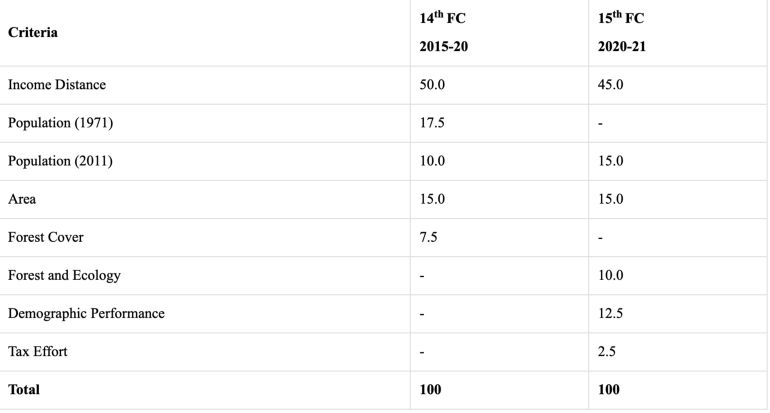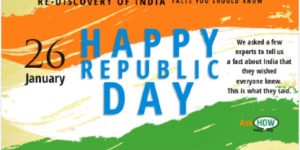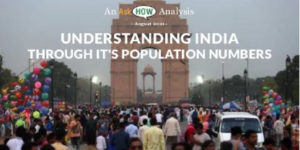Is everyone really equal in a democracy?featured
All human beings are equal. This is the foundational principle of democracy, right? Unfortunately, it isn’t so in practice and what is more, there are no easy fixes. I am not talking about inequalities such as being born in a poor household and having no access to opportunity. I am talking about the basic structure of democracy in the sense of having equal access to power through elections. In this series on population in India, I want to touch upon the topic of how population sizes and growth make it very difficult to stick to the principle of equality of all citizens. Let us open with a simple topic — cricket and then go on to talk about voting for central government and even climate change!

Image by Mediamodifier from Pixabay
Board for Control of Cricket in India (BCCI) is in charge of governing cricket in the country. A few years ago, the Supreme Court constituted a committee — known as the Lodha Committee — to look into its functioning. One of the problems that the committee identified was that which association was a voting member of BCCI was arbitrary. For example, states like Maharashtra and Gujarat had three member associations that were allowed to vote in the BCCI elections whereas Bihar did not have any. To address this anomaly, the committee adopted the principle of ‘One State — One Member — One vote” for all elections in BCCI. This sounds fair but breaks down quickly if you look closely.
Take the case of Uttar Pradesh (UP) and Sikkim. UP, with a population of 231.43 Million is humongous. Sikkim, with a population of 0.67 Million, is tiny in comparison. Is it fair that UP has one vote — the same as Sikkim — when the number of people living in each of the 75 districts of UP is many multiples of the total population of Sikkim? You don’t even need to add to it the fact that it is either too cold or too wet for most of the year in Sikkim and hence, cricket is not a very popular game in the state. The few fans of cricket in Sikkim have disproportionate power compared to the cricket fans of UP and we can easily find many such examples.
To be fair, the Lodha Committee recognized the challenge posed by differences in population sizes, interest and infrastructure in different states. It allowed for the money transferred to the state associations from BCCI to be different. It also agreed that the some of the larger states could have more than one team in national competitions and a few small states could combine to form one team. However, I believe that such sensible suggestions can easily become secondary to political and monetary considerations when the formal power are not divided as sensibly. As it stands, in the plate division of Ranji Trophy, the state of Bihar competed with nine other teams from states like Aruncahal Pradesh, Nagaland and Sikkim. The population of all these states put together is a fraction of Bihar.
I must say here that it is not easy to come up with an alternative to One State — One vote principle. However, there is no doubt in my mind that the current situation is neither efficient nor fair.
If you think cricket is ‘just a game’ (Gasp!), then let us take the very serious topic of representation in democracy. In India, voters elect their representative — the Member of Parliament (MP) at the national level. MPs make laws and also elect the Prime Minister. Earlier, the constituency sizes used to be changed every ten years to ensure that roughly the same number of people were represented by an individual Member of Parliament (MP). This process is called delimitation. In 1977, the constitution was amended (42nd amendment) and the delimitation of constituencies was frozen till the 2001 census. The 84th amendment in the constitution in 2003 extended the freeze till 2026 [1].
These amendments mean that even as the populations of the Northern and Eastern States have increased at a much higher rate than the population in the Western and Southern states, the number of MPs from each state has remained frozen. The population of UP is 231 Million and it is represented by 80 MPs. Tamil Nadu (TN) has 71 Million people and it has 39 MPs in the parliament. The interests of 1.8 Million people in TN are represented by one MP on an average whereas in UP a MP represents 2.9 Million people. A more than 50% difference! Remember that each of these MPs has an equal say in selecting the Prime Minister of the country.
As with cricket, here too it is easier to identify the problem then it is to propose solutions. The idea behind freezing the delimitation was to ensure that the Western and Southern states, which have been faster in reducing their fertility rates, are not be penalized. If states like Uttar Pradesh and Bihar, which have seen a much sharper growth in population, keep increasing their share of total number of Members of Parliament, then they will get proportionally more power. This would mean lesser power for the states which have developed faster and have also slowed their population growth and that does not sound fair too. Especially, as this power includes the power to increase their share of tax revenues and that is where things get really interesting.
Many taxes, such as Income Tax, Customs Duty and Excise Duty go exclusively to the central government. The Centre transfers part of this money to states. What share of the money goes to the state and which state gets how much is determined by Finance Commissions.
There are opposing rationales at play in this decision. On one hand, poorer states require money to improve their infrastructure and without such improvement they would remain poor. Money is not sufficient to improve the economy of the poorer state, it has to be used honestly and efficiently too. But the money is definitely necessary. It would be very difficult for a state to improve its economy for example, if it did not have all weather roads connecting its villages or if it did not have reliable electricity for all its villages. Poorer states also have a higher fertility and a reduction in poverty would contribute to reduction in fertility. On the other hand, more developed states are bound to be resentful if they think that the poorer states are taking away most of their hard-earned money.
The Fifteenth Finance Commission came up with a decision that tried to balance these forces.

Source: Report summary from PRS (https://www.prsindia.org/report-summaries/report-15th-finance-commission-fy-2020-21)
As can be seen, the commission moved from the 1971 Census to 2001 Census, recognizing the higher number of people in states like UP and Bihar. But then, it introduced another criterion called demographic performance which rewards Western and Southern states for lower fertility rates. The weightage for Income Distance (relative poverty) is also reduced. All in all, it is not clear whether and by how much would different states benefit or lose out in this new formula. Maybe this gives a clue of how to take such tough decisions. Don’t change things too much and hide the decision behind dry committee reports and moderately complex Algebra! It helps if there is a sense of being in it all together as a part of one country. A sense which is missing when it comes to international issues such as Climate Change.
I routinely see headlines that say that India is now third highest Carbon Dioxide emitter in the world. Such headlines say absolutely nothing except that India has a large population. New Zealand, for example, has a population which is less than half of many cities in India. Is it a surprise that their Carbon Emissions are lower? What we should be comparing is per capita emissions and the per capita rank of India would be much lower than all developed countries.
There is a further complication. CO2 is a stock pollutant. That is, CO2 once released in the atmosphere, stays there for a long time. NASA estimates that it remains there for between 300 and 1000 years. Thus, even if countries like India are today releasing large amounts of CO2 in the atmosphere, their contribution is a very small percentage of total CO2 which has built up in the last two centuries. This is because the more industrialized nations have been releasing CO2 for centuries and have built their economy and infrastructure on the back of this release. In absence of development, countries like India lose many citizens to much more basic problems like communicable diseases and poverty. Is it fair, to ask these countries to share the same burden as the developed countries?
Like the previous examples, it is easier to come up with a problem description rather than a solution. And that is not surprising. Complex problems do not have the structure “You committed this crime. This is your punishment” and hence cannot have one sentence solutions based on abstract principles. A solution may be found by people talking to each other, sometimes angrily and sometimes calmly. And listening.
And such talking and listening does happen in the world once in a while although the world could do with more of it.
Author –
Yogesh Upadhyaya
(Yogesh Upadhyaya is one of the founders of AskHow India. Blogs are personal views.)
You can follow AskHow India (@AskHowIndia) or me (@Uppi89) on twitter or me on LinkedIn
[1] Since 2003, the freeze is for interstate delimitation. The constituency boundaries within states were changed to allow a more equal representation within states.
This is the tenth in a series on population. The first nine articles can be found here
1. Everything you wanted to know about population (but were too lazy to Google).
2. Are the Acche Din of population growth already here?
3. Chhath — the new national festival?
4. Economic migration in India — The Who, the Why and other good stuff.
5. Islam and population growth in India.
6. Migration and political demography in Assam.
8. Is Haryana becoming Kerala?
9. Matters of Life and Death in India



